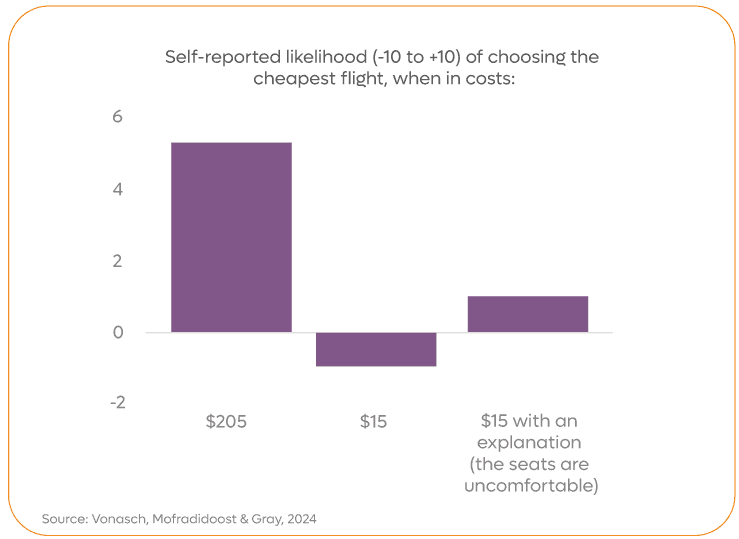Sales psychology: How to do online sales without harming your brand

Just before Christmas I saw a social media post from a friend who runs a small business.
Their post was promoting their products at slashed prices.
Immediately I concluded that their business must be suffering, as I hadn’t seen them do a sale before.
And it turns out I was right.
But would everyone come to the same conclusion?
Analysing it, I believe I was subconsciously biased towards that assumption, perhaps because of something I already knew about that person and their business.
But nonetheless, it got me intrigued. Sales are clearly a very useful tool for many businesses, but what are the downsides? When putting on a sale, might we be communicating messages to our audience that we’re not aware of?
The Marketing dilemma
For marketing teams, sales can provide a short-term boost to meet targets, clear inventory or attract new customers.
With all the pressures that marketing teams face, sales can give instant results, making them a very appealing option.
Aside from that, there’s the marketing calendar pressure. Whether it’s New Year, Easter, Summer, Back to school, Black Friday or Christmas. The impetus to follow the herd and put on a sale like everyone else can be too much to resist. Not least the arguments for going against this flow might be hard to muster up when faced with challenging questions from senior stakeholders.
But once a brand is on that merry-go-round of sales, it often moves too fast for them to get off.
That’s not to say you can’t, but it will likely need a seismic shift in marketing strategy to pull off, especially if you have a loyal customer based built on the premise of these sales.
Why sales work
I’m sure we all instinctively know why sales work, but it’s worth reminding ourselves to set the premise for the rest of the article.
Aside from giving us a reason to contact our customer base, and shout about our products, sales offer a very clear and immediate value to customers making it easier for them to justify a purchase.
Sales create opportunities to:
- Apply discounts making some products or services more accessible to a wider audience.
- Provide businesses with an effective way of clearing out stock.
- Encourage impulse buys.
- Bring more users to the websites, creating opportunities for cross-selling or upselling.
Sales work because they tap into fundamental psychological and behavioural drivers that influence consumer decision-making.
Here are the top 3 reasons:
- Loss aversion.
Consumers really hate to miss out on a deal. They are hard-wired to avoid losses more than seek gains. A discount creates the perception of saving money or avoiding the loss of paying full price. For many, this is enough to motivate them to complete a sale. - Scarcity and urgency
Limited time, or limited stock sales tap into the idea that rare or fleeting opportunities are more valuable. Therefore, it increases the deal’s perceived importance and desirability. - Anchoring
Seeing a higher “original” price next to the discounted one, creates a reference point. The discounted price automatically feels like a bargain, even if it may not be.
The closing down sale
There is something about a ‘closing down sale’ that sparks an emotional response from loyal customers. Taking a real shop example, the closure of Small’s Sweet Shop in Forfar Scotland after 66 years, led to an outpouring of community sentiment and a short-term boost in sales before closure.
The forever closing down sale
But what about the brands who seem to always have a closing down sale on?
On my local high street there’s a Blacks. For well over a year now, whenever I visit the high street, it seems to have a sale on. Initially upon seeing the sale I experienced the emotional response outlined above; I felt sad that another great shop was on its way out and it compelled me to visit and even buy from them.
But now, a couple of years in, with that sale still in full swing, I have altered my perceptions. Where I use to view the brand as reputable, trustworthy, and valuable, I now see it as desperate, low-value and needy.
I’d hazard a guess that their customer base, for that location at least, has changed from what it once was.
The tipping point
Theories suggest our biggest motivator is money. If someone would be paid £20 to do a job, they’d be even more likely to accept the job for £30.
But there’s a line evidenced with this stance. In experiments, if Person A were to offer money to do Person B a favour, researchers found that Person B would be less likely to accept the offer.
In another experiment, the uptake for a cleaning job went down if the hourly wage increased from $40 to $250. Higher wages of this magnitude implied some phantom costs, which put people off. There’s also a likelihood of thinking themselves underqualified for the job.
In the experiment outlined below, participants were presented with a vignette and given three flight price options to choose from. The lowest price was either $205 or $15, while the other two prices stayed the same. Participants tended to avoid the extremely low-priced flight, perceiving it to have hidden costs.
The cost to brand perception
So, when you’re planning pricing and promotions, just be aware that some things can feel too good to be true. If it’s heavily discounted, for example, people might infer there’s something wrong with it.
In our own survey on this, the majority of voters, upon seeing a sale, claimed they thought the brand was trying to boost sales (38%). Only 20% viewed the sale purely from a ‘bargains to be had’ perspective.
This should be food for thought for brands when putting on sales. They should consider the wider assumptions people might make and whether these align with their brand at the time.
For example, if a brand is perceived as trying to boost sales, is there an underlying assumption that implies? A pre-sale survey might guide us here.
Failing that, perceptions can be guided simply by including justification in marketing material. Here are examples for both B2B and B2C businesses.
- “Pre-season stock clearance”
- “Anniversary Celebration Sale!”
- “New Year kickstart”
- “To launch our new service tier, we’re offering reduced rates for the first three clients to sign up.”
- “Sign up for [service] and receive [add-on service] at no extra cost.”
- “Unlock £X in potential revenue with our special pricing for January sign-ups.”
Desperation is a perception that should be avoided where possible. Consumers respond better when they know a product or service is in high demand (backed by theories of scarcity & herd mentality). So how you frame it is important.
Sales Frameworks:
When are sales most effective?
Not all sales are created equal. Some businesses benefit significantly from promotions, while for others, the cost to brand perception outweighs the gains. Here’s a framework to determine the best-case scenarios for putting on a sale:
- To Clear Seasonal Stock: Fashion brands, for example, need to make room for next season’s inventory. Here, sales are expected and don’t harm the brand if done sparingly.
- During Key Shopping Events: Black Friday, Cyber Monday, or Boxing Day are moments when consumers actively expect promotions. Participating in these events aligns with consumer psychology and avoids looking desperate.
- To Introduce a New Product: Offering an introductory discount can entice customers to try a new product without affecting the long-term perception of your pricing.
- To Reward Loyalty: Targeted promotions for repeat customers or members of a loyalty programme feel exclusive rather than desperate. They foster goodwill and deepen the relationship.
Should You Run a Sale?
If you’re not sure whether a sale is right for your brand at any given time, here’s a framework to consider:
Objective: Are you clearing stock, acquiring customers, or driving loyalty? If it’s just to hit short-term revenue targets, consider framing the messaging to counteract negative perceptions.
Brand Positioning: Is your brand built on quality, exclusivity, or affordability? Sales may not align with a premium or luxury image.
Target Audience: Do your customers expect discounts? Frequent shoppers on value-focused platforms like Amazon are far more receptive to sales than buyers of bespoke services.
Frequency: Is this a one-off promotion or a regular occurrence? Repeated discounts can train customers to wait for sales, impacting growth at non-sale times.
In Summary
Sales can be a double-edged sword: they can drive short-term results, but if not executed thoughtfully, they risk damaging long-term brand perception. By understanding the psychology behind sales and carefully framing their purpose, businesses can strike the right balance between creating value for customers and protecting their reputation. Whether you’re clearing stock, rewarding loyalty, or introducing a new product, always align your sales strategy with your brand positioning and audience expectations. Thoughtful messaging and strategic timing can turn a sale into an opportunity to strengthen, rather than weaken, your brand.
—–
Gardner, M. J. (2022). Deal or No Deal: Sales Promotion Influence on Consumer Evaluation of Deal Value and Brand Attitude. Small Business Institute Journal, 18(2), 18–27. https://doi.org/10.53703/001c.68379
Vonasch, A. J., Mofradidoost, R., & Gray, K. (2024). People reject free money and cheap deals because they infer phantom costs. Personality and Social Psychology Bulletin, 01461672241235687.
All our resources are FREE
Want to stay updated?
Get instant updates on our latest news and resources by subscribing to our mailing list
"*" indicates required fields
Related Services
Increase conversions!
Take this free website assessment and unlock the secret to converting more sales & enquiries
Get my website assessment
 Get your score!
Get your score!
Unlock the secret to converting more sales & enquiries
Take our scorecard - it takes just 2 minutes
Get your SmartSite score
